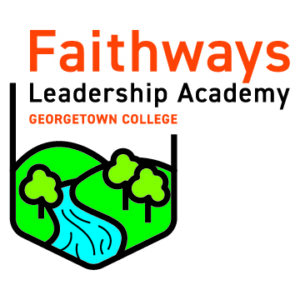General Assembly Overview
Middle School (MS) & High School (HS)
Default role for all KUNA Delegates
General Assembly Resources
Guides, Templates, and Scripts
The UN General Assembly is the largest program area at KUNA, and includes all delegates not serving in other program areas.
As members of the General Assembly, each country sponsors one (1) UN Resolution.
Using KUNA Debate Procedure, our version of Parliamentary Procedure, the General Assembly considers resolutions through the following process:
- Ranking Committees: where all resolutions are presented and ranked before advancing to either Voting Committees or a General Assembly session for debate and voting.
- Voting Committees: where most resolutions go after committees to be debated and voted on.
- General Assembly Sessions: where 3 Resolutions – 2 Schools’ Choice (voted on by students after committees) and 1 Secretary General’s Choice (selected by the Secretary General) – are debated and voted on by the entire Assembly.
Program Area Roles
A comprehensive Role Guide is available for each of the following delegate roles and officer positions on the KUNA Resources page
Delegate Roles
Ambassadors
All members of the General Assembly are Ambassadors, who represent the positions of their respective countries when ranking and voting on the Resolutions presented in committees and/or General Assembly Sessions.
Resolution Sponsors
Up to 4 Students per Resolution
Each country submits one (1) UN Resolution to be considered by the General Assembly, and up to 4 delegates can serve as the Sponsors of the resolution. Sponsors are responsible for the following tasks:
- Resolution Writing & Research – Lead the research and writing of the resolution. Countries can write their resolutions on an international issue their country would like discussed by the UN, or choose one of the issues from the KUNA 2025 Secretary General's Agenda A guide for writing your resolutions, can be found in the General Assembly Resource Folder (link at top of page).
- Presenting Resolution – Give an opening and closing statement and answering non-debatable technical questions during debate. Opening and closing statements must remain under 3 minutes and cannot include any use of props during their speech, nor give reference or require audience participation.
Secretariat Research Commission (SRC) - resolution sponsors will be able to meet with Presiding Officers over Zoom to get feedback on their resolutions and ensure they're in the correct format. All resolutions that meet proper formatting guidelines will be given the SRC Seal of Approval on their KUNA resolution in their conference resolution book! Resolutions must be submitted by the registration deadline to be eligible for the SRC seal. Register here (click here) for one of the Zoom Meetings:
- Tuesday, January 28, 2025, from 5:30-6:30 PM EST
- Tuesday, February 4, 2025, from 6:30-7:30 PM EST
- Tuesday, February 11, 2025, from 5:30-6:30 PM EST
- Tuesday, February 18, 2025, from 6:30-7:30 PM EST
Supporting Officers
Committee Chairs / Vice Presidents of the General Assembly
Appointed by Delegation | 2 per delegation (Grades 8/12)
- Must attend one of our KUNA Supporting Officer Trainings in February (Committee Chairs can choose either date).
- Chairs run debate during Committees at KUNA. They should have at least one year of experience attending either KYA or KUNA.
- Chairs will be co-chaired during committees. Each chairperson will alternate chairing and clerking the committee. As clerks they will be in charge of timing and keeping track of the docket.
- Based on their Committee performance, Chairs can be chosen as Vice Presidents of the General Assembly that preside over Voting Committees later in the day.
Presiding Officers
Delegations must intent and register for the conference of which their Presiding Officer is elected/appointed.
Secretary General
Elected from Candidates
- Oversees the passage of resolutions of the General Assembly and determines endorsement.
President of the General Assembly
Elected from Candidates
- Faciliates debate of resolutions in the General Assembly.
Ranking Committees
All General Assembly Ambassadors are assigned to serve as members of a specific Ranking Committee (Ranking Committee A, B, etc.)
To rank bills, delegates use Ranking Sheets – one sheet per school in each committee – and rank bills on the following criteria (1-5 on each, poor to excellent):
- Evidence of Research – Was this issue well researched, including any applicable policies already in place?
- Feasibility – Is it possible for the United Nations to implement this resolution?
- Impact – Is this policy issue is impactful enough for either the world or country for the GA to intervene?
- Presentation – Is there evidence of training by the Sponsors? Were they persuasive?
- Creativity – Are the proposed ideas, actions and solutions unique?
The highest-ranked resolutions in each committee session are placed on ballots (one ballot for resolutions heard in the first committee sessions, one ballot for those heard in the second), and during General Assembly sessions, countries vote to select the Schools’ Choice Resolutions.
All resolutions not selected as Schools’ Choice advance to Voting Committees where they are heard and voted upon.
Voting Committees
- All General Assembly Ambassadors are assigned a Voting Committee (VC 1, VC 2, etc.)
- Most Resolutions will be presented, debated, and voted on during Voting Committees. The only exceptions are the two (2) Schools’ Choice Resolutions, which will be debated and voted on during General Assembly sessions.
- If a resolution is passed in Voting Committees, the sponsors will sign-up to meet with the Secretary General. In the meeting with the Secretary General, sponsors will have a few minutes to present, followed by questions and discussion that will help determine whether the Secretary General will endorse their resolution.
Parliamentary Procedure
To keep things running smoothly at KUNA, resolutions are handled in accordance to parliamentary procedure as outlined here. Ambassadors are expected to follow parliamentary procedure with respect to themselves and their peers. They are debating from the viewpoint of their country and should keep their country’s cultures and ideologies in mind throughout debate.
- The Chair will announce the resolution number and ask the sponsors to come forward.
- The clerk will read the title of the resolution.
- Sponsors’ Opening Speech
- The Sponsors will have 3 minutes to divide between their opening and summation statements. Opening and closing statements must remain under 3 minutes and cannot include any use of props during their speech, nor give reference or require audience participation.
- The Sponsors must state their names, identify the country they represent, and their school. At this point their time will begin and they then have the floor to introduce their issue.
- All remaining time will be reserved for the Sponsors to make their closing points. If three minutes is exceeded, then the Sponsor will be instructed to stop speaking and will not receive time for their summation speech. This speech is considered a pro speech.
- The Chair will announce how much time remains for the sponsors’ summation.
- A country caucus period will be given prior to Technical Questions, to allow for ambassadors to confer with one another for debate purposes.
- Non-Debatable Technical Questions
- Time will be allotted for Ambassadors to ask questions which can be answered with “Yes,” “No,” or a factual answer. Ambassadors may be asked to rephrase their question or to sit down if the chair finds it to be debatable, opinion-based, or lacks the ability to be answered factually.
- Pro/Con Speeches
- Recognized Ambassadors will be allowed one (1) minute each to speak beginning with a speech in opposition to the resolution, followed by a speech in favor of the resolution.
- This will alternate until the allotted time has elapsed.
- The Sponsors’ speeches are considered the first and last pro speeches, so debate will always begin and end with a con speech.
- Length of debate and the number of pro and con speeches allowed is at the discretion of the Chair and Y-Staff, based on time constraints and relevance of debate.
- Yielding
- Ambassadors may yield to each other, or request the sponsors to yield to questions by stating their name, country, school, and immediately following up with their request to yield.
- The Chair calls “Previous Question”
- Once the allotted time is exhausted the Chair will call previous question. This signifies that it is time for the Sponsors to present their summation.
- Sponsors’ Summation Speech
- The Sponsors may use whatever time was yielded to their summation speech to make closing remarks and address any points made during debate.
Note: At this point the procedure is different for Ranking Committees than it is for Voting Committees and General Assembly. In Ranking Committees, Ambassadors will rank resolutions, in Voting Committees as well as General Assembly they will vote on passage of resolutions based on merit.
Ranking Committees
- Rank Resolutions
- Each school will receive one ranking sheet per committee and those Ambassadors present will be given a short amount of time, between thirty seconds and one minute, in which they will rank the resolution on a scale of one (1) to five (5) with five (5) being the best based on the following categories:
- Evidence of Research
- Presentation/Preparation
- Feasibility
- Impact
- Creativity
- Each school will receive one ranking sheet per committee and those Ambassadors present will be given a short amount of time, between thirty seconds and one minute, in which they will rank the resolution on a scale of one (1) to five (5) with five (5) being the best based on the following categories:
- Proceed to the next resolution on the docket.
At KUNA it is important to remember to represent the ideals and culture of the country you represent, especially when debating and ranking Resolutions.
General Assembly/Voting Committees
- Vote on Resolution
- The Chair will call for the countries to caucus, to discuss in a short amount of time how they would like their voting Ambassador to vote on the resolution.
- After the caucus time, the Chair will move on to a vote of “In favor”/”Opposed.”
- This is a vote by each voting Ambassador (one per country) by raising their country’s placard and by stating in a normal tone of voice, “Aye” or “Nay.”
- Countries may abstain from voting.
- After announcing the results (resolution is passed or defeated), the Chair slowly raps the gavel twice.
- “Division” may be called by the Chair in case of a close vote, or it may be called by any Ambassador between the two gavel raps. If division is called, a standing vote may be taken if the Chair chooses to recognize the division. Adult participants cannot call for division.
- If the Chair feels that division was called only in protest of the results and that the vote had a clear winner, the Chair may override the call of division.
- Proceed to the next resolution on the docket.





